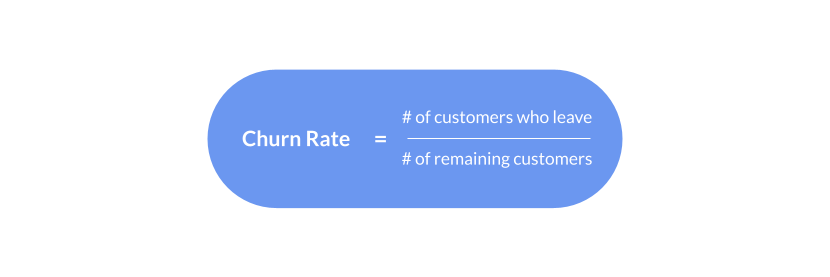How to Measure Customer Engagement for Your Brick-and-Mortar Business
How loyal (we mean really loyal) are customers to your brand? Can you correlate personalized marketing emails to up-sell purchases? How well is your gift card program generating revenue and attracting new customers?
If you don’t know the answers, you’re in the right place!
In this blog, we're discussing how brick-and-mortar locations can measure and understand the impact of customer loyalty, gift card programs, and marketing automation efforts. After all, you should know if the time and money invested into these customer engagement strategies are working effectively or not.
How to Measure the Success of your Customer Loyalty Program
Every retailer, small business owner, and restauranteur lives or dies by customer retention and loyalty. Here are three metrics you should measure to gauge the loyalty of your customer base.
1. Purchase Frequency
How much time passes before your customer makes another purchase? If they are loyal to your brand and highly engaged, the timeframe will be short. Measuring purchase frequency helps you understand your customer’s purchasing behaviour. Plus, loyal customers who make frequent purchases are more likely to refer new customers and advocate for your brand. With a better understanding of purchase frequency, you can better structure marketing activities around your customer’s path to purchase.
.png?width=830&name=Measurement%20Blog_%20Purchase%20Frequency%20(1).png)
To calculate Purchase Frequency divide the number of purchases your customers have made by the number of unique customers (over the same period of time).
2. Average Order Value
What’s the average basket size or amount a customer spends at your establishment? Typically, repeat customers spend 7x more than a one-time customer. By keeping a pulse on average order value, you can evaluate (and improve) pricing and marketing strategies. A steady increase in your average order value will be a good sign that your business is healthy and profitable.
.png?width=830&name=Measurement%20Blog_%20Average%20order%20value%20(1).png)
To calculate Average Order Value divide your total revenue by the total number of orders placed (over the same period of time).
3. Repeat Purchase Rate
How many customers have made more than one purchase this month? The answer will shed light on your customer retention and indicate if your loyalty program strategies are working. The customer who comes back two, four, or even 20 times to make a purchase is valuable. When your repeat purchase rate increases, your marketing costs to acquire a customer gets spread out over multiple purchases. That means a higher profit to pocket or reinvest into your business!

To calculate Repeat Purchase Rate divide the number of customers who purchased more than once by the total number of customers (over the same period of time).
How to Measure the Success of Your Gift Card Program
There are many business benefits tied to selling gift cards. In fact, 41% of people visit a new business after receiving a gift card. Knowing the health of your gift card program and measuring its value are indicators of your brand’s overall strength and staying power. To maximize the profitability and potential of your gift card program, track these key performance metrics.
4. Gift Cards in Circulation
Gift cards are branded currency that never expires. Keeping track of how many gift cards are in circulation and their value is an accounting must-have. Plus, a high circulation number is a good indication of your brand’s popularity.
5. Sales by Channel
To understand where activation and redemption volume occurs, compare total gift card sales across all merchants and distribution channels. That may include multiple brick-and-mortar locations, gift card malls, wholesale clubs, and even online sales.
6. Percentage of Total Sales
Compare gift card sales to total company sales. Given the revenue and growth potential a gift card program provides, it’s worth measuring this metric and trying to increase your gift card program’s share of the load.
7. Activity
How many visits did the customer make to spend a $100 gift card? Tracking gift card activation and redemption activity is the best way to find the answer.
8. Float Balance
When a gift card sells, you pocket the cash. Until that gift card is used, you have a float balance to track across both active and inactive gift cards. If a gift card is never used, your float balance becomes revenue!
9. Return on Investment
Does the performance of your gift card program outweigh operation costs? To find out, add up the administrative fees associated with gift card production, fulfillment, and any third-party contracts and subtract total gift card sales.
How to Measure the Success of Your Marketing Automation Efforts
A marketing automation program enables businesses to engage with their customers in a strategic and timely fashion using email campaigns and text messaging. If you’re unfamiliar with automated marketing campaigns, here are a few examples:
- Send a special offer on your customer’s birthday
- Deploy “win-back” messages if your customer hasn’t purchased anything in a while
- Communicate new opportunities to earn rewards or double points
- Ask for a review immediately after your customer makes a purchase
- Share personalized and relevant offers based on purchase history
.png?width=830&name=Measurement%20Blog_%20Marketing%20Automation%20(2).png)
Measuring marketing automation activity is not an exact science. However, calculating your up-sell rate and customer churn rate are two key performance indicators to realize the success of your marketing automation efforts.
10. Up-Sell Rate
Up-selling can include a customer buying a more expensive product or their willingness to purchase an add-on item. If you're selling running shoes, it makes sense for a marketing automation campaign to play up your selection of socks.
Your up-sell rate is a good litmus test of customer experience, satisfaction, and brand loyalty. A customer will not buy additional items if they don’t like doing business with your brand! It’s also a good indicator that they are more likely to make future purchases. If your up-sell rate starts to decline, you'll know it's time to change the offer, messaging, or timing of your automated marketing campaigns.

You can calculate the up-sell rate daily, monthly, or annually using this formula: Number of customers who purchase an add-on following a marketing automation campaign divided by the total number of transactions.
11. Customer Churn Rate
Customers come and go, and that’s known as your churn rate. It’s not uncommon for a customer to opt-out of text messages or unsubscribe from your email list. The question you need to ask is why? Are your marketing automation campaigns irrelevant? Are you engaging with them too often? Tracking your churn rate helps you understand the health and stickiness of your business. If your churn rate decreases over time, that means your efforts are working, and you should stay the course!

Here’s how to measure your customer churn rate: Take the number of customers who leave divided by the number of total remaining customers.
How can Paystone help with all this?
Crunching numbers and long division is not the best use of any small business owner’s time. Technology has automated so much of your daily operations so, why not take advantage of software solutions designed to track and measure your customer engagement efforts.
.png?width=830&name=Measurement%20Blog_%20Dashboard%20(1).png)
You see, Paystone’s software is chock full of loyalty reports keeping an eye on your purchase frequency and average order value. Our software can also help attract new customers and grow your revenue because it comes with gift card tracking and dashboards. Even better, Paystone’s software offers marketing automation so you can send personalized offers, increase your up-sell rate, and ramp up your repeat purchase rate.
Paystone’s customer engagement software encompasses loyalty, gift card, and marketing automation to support the needs of every 21st-century business owner. Our customer engagement software can even help increase overarching metrics like Net Promotor Score and Customer Lifetime Value.
12. Net Promoter Score
Net Promoter Score measures the likelihood of customers recommending your brand to others. The most common way to gauge your Net Promoter Score is through customer surveys. The survey asks customers to rate their experiences using a scale from one to 10. It's best to send the survey shortly after a transaction to capture their authentic experience and identify actionable steps for improvement.
13. Customer Lifetime Value
Customer Lifetime Value is an important metric because the higher the number, the higher your profits. Acquiring new customers costs five to seven times more than keeping an existing customer happy and loyal. Plus, a long-time, loyal customer is more likely to recommend your business to friends and family.
In order to calculate Customer Lifetime Value, you'll first have to calculate Customer Value, which is your Average Order Value divided by your Average Number of Orders:

Once you've calculated Customer Value, you'll be able to calculate Customer Lifetime Value by multiplying Customer Value by your Average Customer Lifespan (in months or years, depending on the nature of your business):

Ways You Can Improve Your Customer Engagement Efforts
Once you start measuring customer loyalty, the impact of gift cards, and marketing automation campaigns, there will likely be areas that need extra attention and improvement. You may be able to resolve some issues quickly, while other metrics will take time to improve. Here are a few places to start:
1. Launch a Customer Loyalty Program
If you don’t have a modern loyalty program in place, get one. Not only will a well-run loyalty program increase your average purchase amount by about 25%, but 75% of customers tend to make another purchase after receiving a loyalty reward.
2. Start Selling Gift and E-Gift Cards
It’s time to ditch those paper gift certificates. Selling branded gift cards in-store and on your website will bring new customers through your door, increase brand exposure and deliver more bang for your buck.
3. Automate Your Marketing
Sending automated communications and timely offers are vital to building a long-term, profitable relationship with your customers. In fact, 91% of consumers are more likely to shop with brands who recognize, remember, and provide relevant offers and purchase recommendations.
Looking for more strategies to improve the success and impact of your customer engagement programs? Check out What is Customer Engagement: A Guide for Canadian Business Owners.